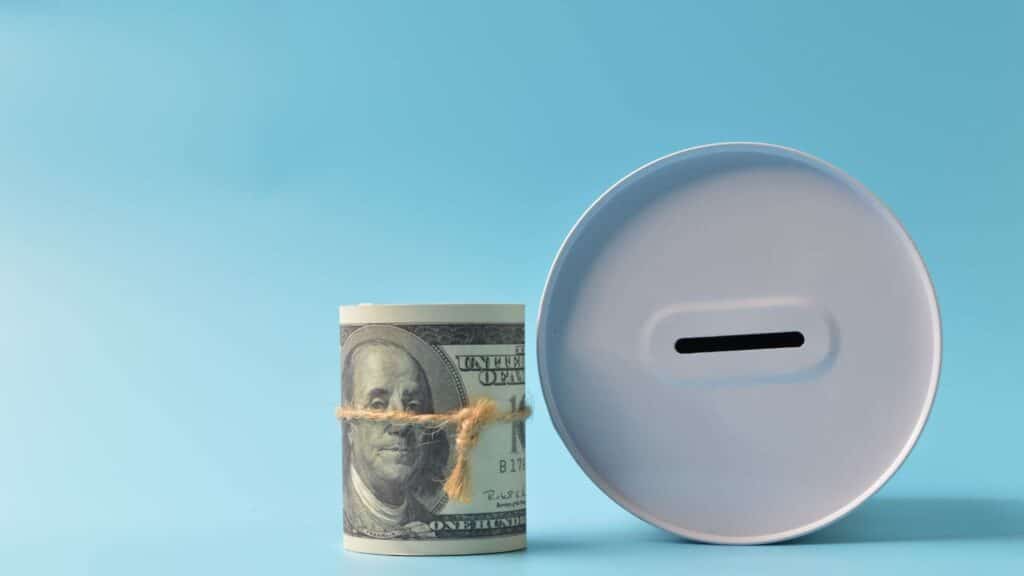Table of Contents
Preparing finances for unexpected challenges can cover unforeseen expenses for unknown reasons. Whether it’s accidents, job loss, or medical expenses, meeting their repercussions seems overwhelming when the saving don’t meet their expenses.
However, every problem comes with a solution, but precautions can make the process easier. Therefore, knowing where to keep your emergency fund is crucial for safety and accessibility while keeping a modest growth factor. Where to put emergency fund money? Here’s what you need to know.
Where to Put Emergency Fund Money
You’ve put in the grunt work to save up for a rainy day fund. Wouldn’t you want to get the maximum juice out of it? That can be done if you know the best answer to: Where to put emergency fund money? We tell you where and how.
How to Choose the Right Place for Your Emergency Fund
Your emergency fund’s location should prioritize liquidity, safety, and modest growth. Here are critical considerations to guide your decision-making process:
Liquidity
Ensure the funds are quickly accessible without penalties or restrictions, as emergencies often require immediate financial resources.
Safety
Prioritize low-risk accounts to protect your principal. Avoid options subject to market volatility or value loss during downturns.
Interest Rates
Select accounts with competitive interest rates to combat inflation and maximize returns without compromising safety or accessibility.
Fees
Avoid accounts with excessive maintenance or transaction fees that can erode your emergency fund over time.
Accessibility
Opt for accounts that provide easy online or branch access to funds during emergencies.
FDIC or NCUA Insurance
Ensure the FDIC or NCUA insures your account to safeguard deposits up to $250,000 per institution. You can confidently choose the best place for your emergency fund by evaluating these factors.

High-Yield Savings Accounts
High-yield savings accounts (HYSAs) are ideal for emergency funds because they combine safety, liquidity, and better interest rates than traditional ones. Online banks typically offer them, which pass on savings from lower overhead costs to customers as higher yields. HYSAs are FDIC-insured, ensuring your deposits are safe up to $250,000.
They allow easy withdrawals and transfers, making them highly accessible in emergencies. Additionally, no minimum deposit or balance requirements exist, making them suitable for all savers. Their competitive rates help mitigate inflation, ensuring the value of your savings grows over time.
Money Market Accounts
Money Market Accounts (MMAs) blend savings and checking accounts features, making them a versatile option for emergency funds. MMAs often offer higher interest rates than regular savings accounts while maintaining FDIC or NCUA insurance for deposit protection.
These accounts allow limited check-writing and debit card access, providing added convenience without compromising liquidity. MMAs appeal to individuals who need slightly more flexibility in accessing their funds but still want to earn a competitive yield. However, they may require a higher minimum balance to avoid fees, so consider your financial situation before opening one.
Certificates of Deposit (CDs)
Certificates of Deposit (CDs) are time-bound savings options offering higher interest rates in exchange for locking funds for a specific period, ranging from a few months to several years. CDs are a safe choice for emergency funds if you adopt a laddering strategy—spreading investments across CDs with different maturity dates. This approach ensures periodic liquidity while earning better returns compared to regular savings accounts. However, early withdrawals usually incur penalties, reducing their flexibility for immediate emergencies. CDs are best for funds you can afford to set aside without needing instant access, providing steady growth for planned financial goals.
Cash Management Accounts
Cash Management Accounts (CMAs) are hybrid accounts that blend the benefits of savings and checking accounts. Offered by fintech companies and financial institutions, CMAs often provide competitive yields, making them ideal for emergency funds. They allow seamless integration with investment accounts, ensuring flexibility for users managing multiple financial goals.
CMAs typically come with features like ATM access, check-writing, and online transfers, offering convenience and accessibility. While they may lack FDIC insurance, partner banks usually ensure funds are protected up to applicable limits.
Traditional Savings Accounts
Traditional savings accounts are secure options for emergency funds, offering guaranteed safety through FDIC or NCUA insurance. These accounts provide easy access through physical branches or online platforms, ensuring immediate availability in emergencies.
However, their interest rates are generally lower than other options like high-yield savings or money market accounts, limiting their ability to combat inflation. Despite this, traditional savings accounts remain reliable for those who prioritize simplicity, local banking relationships, or avoiding complex account requirements.
Avoiding Risky Investments for Your Emergency Fund
Avoid stocks, mutual funds, or any high-risk investments for your emergency fund. These options are volatile and could lead to losses just when you need the money. Instead, prioritize accounts with guaranteed returns and no risk to the principal amount.
How Beem Can Help You With Emergency Fund Money
Beem, your go-to solution for personal finance, provides innovative solutions to help manage emergency funds. Beem’s Everdraft™ lets users access up to $1,000 instantly, without fixed repayment schedules or hard credit checks. This flexibility makes it an excellent tool during financial crises.
Additionally, Beem offers a user-friendly marketplace for personal and emergency loans, helping you find low-interest options that suit your needs. Its AI-driven insights simplify decision-making, making Beem a reliable partner in emergency fund management.
Conclusion
Choosing the right place for your emergency fund involves balancing liquidity, safety, and earnings. High-yield savings accounts, MMAs, CDs, and CMAs offer secure and accessible options, while traditional savings accounts remain a simple fallback. Avoid risky investments to safeguard your funds.
Beem offers tools to automate savings, track goals, and access funds easily. Beem’s BFF Budget Planner™ enables users to spend, save, plan, and protect their money like an expert with on-point financial insights and recommendations. By managing your emergency fund through Beem, you gain greater control over your finances, ensuring you’re prepared for any challenges that come your way. Download the app here.
FAQs for Where to Put Emergency Fund Money
Where should I keep my emergency fund?
Keep your emergency fund in a secure, liquid account, such as a high-yield savings account or money market account, to ensure easy access and safety.
What are the best options for storing an emergency fund?
High-yield savings accounts, money market accounts, certificates of deposit (CDs), and cash management accounts are excellent choices offering safety, liquidity, and modest growth.
Can I invest my emergency fund in stocks?
No, stocks are too volatile for emergency funds and can result in losses during market downturns, when you need them most.
How liquid should my emergency fund be?
Your emergency fund should be highly liquid and accessible within hours or days, without penalties or delays in withdrawal processes.
What are the risks of keeping my emergency fund in a regular savings account?
Regular savings accounts often offer low interest rates, which may not keep up with inflation, reducing the purchasing power of your emergency fund over time.
















































